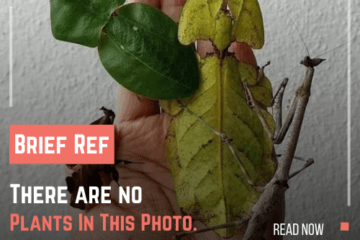Scientists Discover That Plants Scream When They Get Cut, But Humans Can’t Hear It
In a groundbreaking study that has captivated the scientific community and the public alike, researchers have discovered that plants scream, emitting high-frequency sounds when damaged. These sounds, often described as “screams,” occur when plants are cut or otherwise harmed. Remarkably, these sounds are beyond the range of human hearing, but they offer new insights into plant behavior and communication. This discovery, highlighted in a recent brief, has been termed the voice of plants and challenges our understanding of plant life, opening up new avenues for research.
The Science Behind Plants Scream
Understanding Plant Communication
For years, scientists have known that plants communicate through chemical signals and electrical impulses. Plants can release volatile organic compounds to attract predators to fend off herbivores or to signal other plants about environmental changes. However, the idea that plants could produce sounds in response to physical damage is relatively new. Researchers have found that plants emit ultrasonic vibrations—sounds with frequencies higher than the human ear can detect—when they are injured.
The Experiment: Unveiling the Hidden Sounds
The study, conducted by researchers at the University of Tel Aviv, involved recording the sounds produced by various plants when subjected to different types of stress. The researchers used highly sensitive microphones and advanced technology to capture these high-frequency sounds. The results revealed that the sounds emitted by plants when cut were distinct from those produced by healthy plants or those under mild stress.
Implications of the Discovery
New Perspectives on Plant Sensitivity
This discovery has significant implications for how we understand plant sensitivity and their response to their environment. The idea that plants “scream” when cut suggests a level of awareness and reaction that goes beyond simple biochemical responses. It raises questions about the nature of plant consciousness and their ability to experience stress or pain.
Impact on Agriculture and Horticulture
For agriculture and horticulture, this discovery could lead to changes in how we manage and cultivate plants. Understanding that plants may emit distress signals when damaged could influence how we handle crops and garden plants. It could also lead to the development of new methods to reduce plant stress, improve plant health, and enhance yield.
Ethical Considerations and Future Research
Rethinking Our Relationship with Plants
The revelation that plants produce sounds when they are harmed challenges traditional views of plants as passive organisms. It prompts a re-evaluation of how we interact with plants and the ethical considerations surrounding their treatment. If plants are indeed capable of producing distress signals, it raises questions about the morality of certain agricultural and horticultural practices.
Directions for Future Research
Future research will need to explore the full implications of this discovery. Scientists will investigate how different types of plants produce these sounds, whether the sounds can be used as indicators of plant health, and how plants might communicate with each other using these signals. Additionally, researchers will look into the potential applications of this knowledge in improving agricultural practices and plant care.
Brief: A New Understanding of Plant Life
The discovery that plants emit high-frequency sounds when damaged significantly advances our understanding of plant life. It challenges long-held beliefs about plant communication and sensitivity and opens up new areas for exploration in botany and agriculture. As scientists continue to study these “plant screams,” they may uncover even more about how plants interact with their environment and each other. This breakthrough reminds us that the natural world is full of mysteries waiting to be unraveled and that even the most familiar aspects of life can hold surprising secrets.




